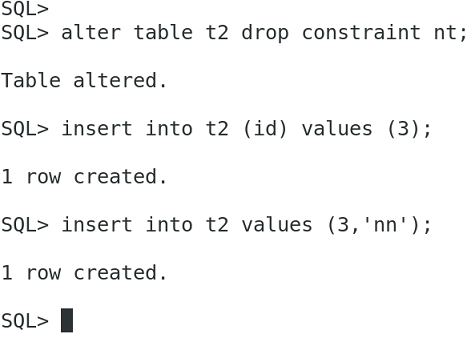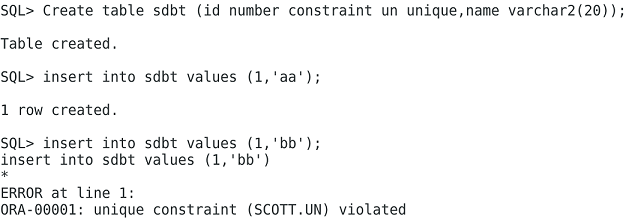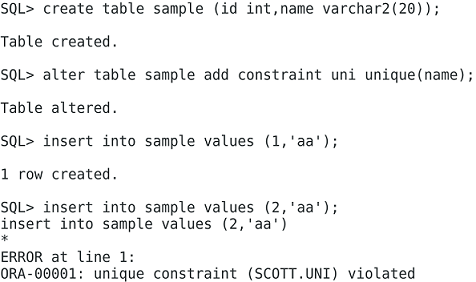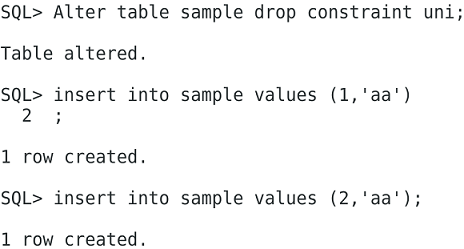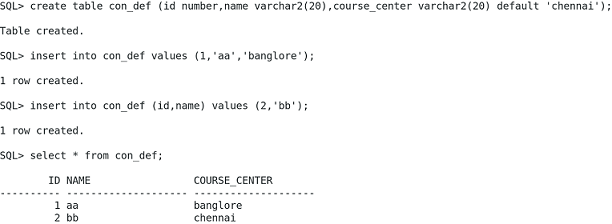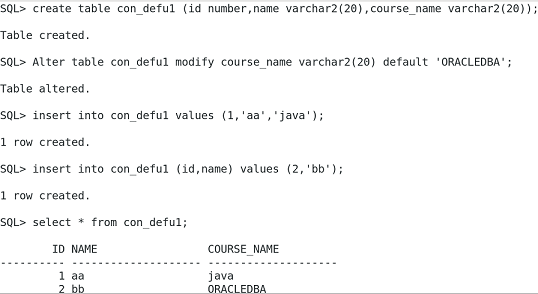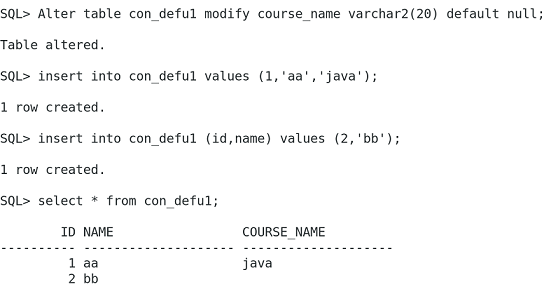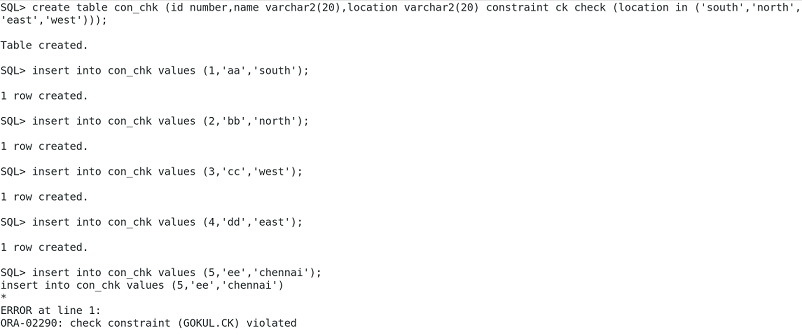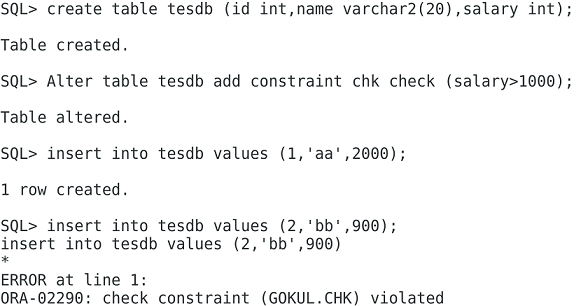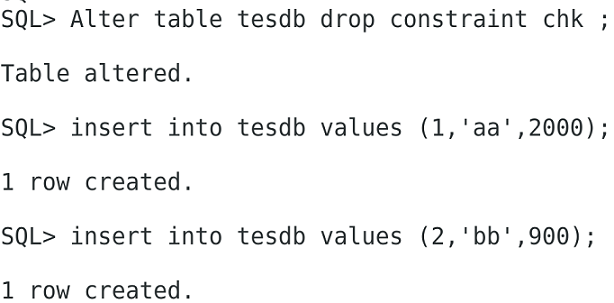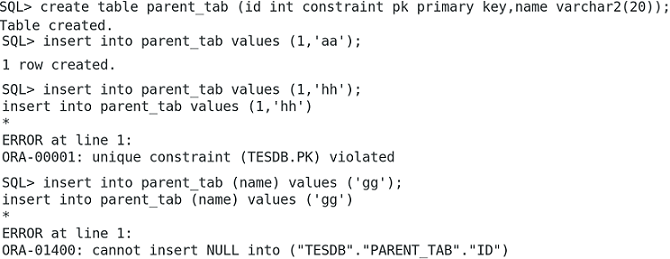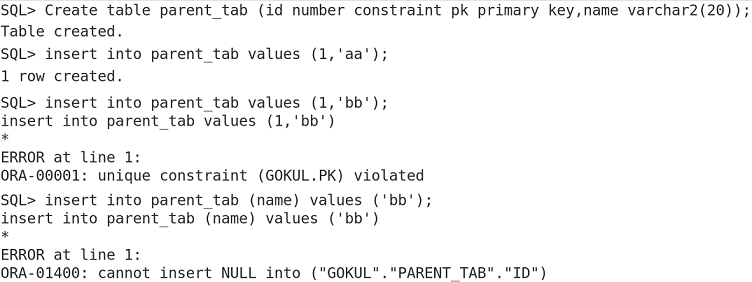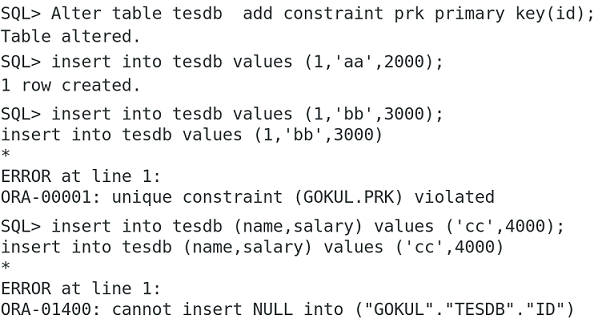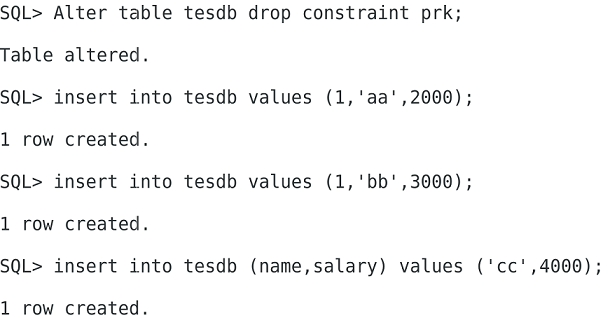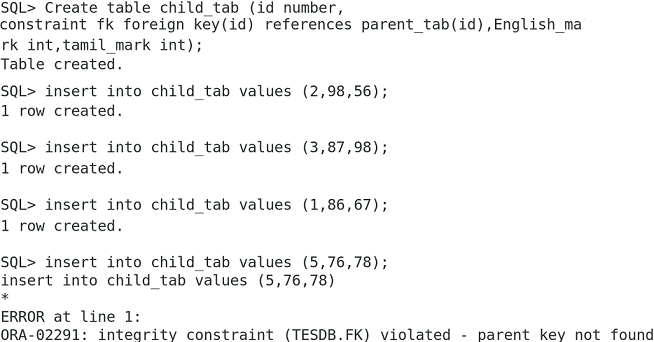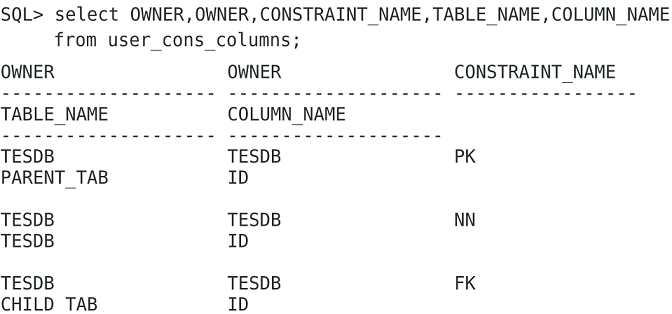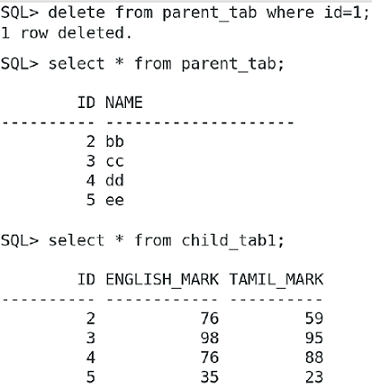SQL - CONSTRAINTSWhat are constraints in SQL? SQL constraints define rules for the data in a table. Constraints are used to limit the kind of data that can be entered into a table. This ensures that the table's data is accurate and reliable. Types of Constraints :
Types of SQL Constraints :
How to check constraints
How to check column level constraints :
NOT NULL Constraint
Create table t1 (id number constraint nn not null,name varchar2(20));
SQL> Create table t1 (id number constraint nn not null,name varchar2(20));
Table created.
SQL> insert into t1 values (1,'aa');
1 row created.
SQL> insert into t1 (name) values ('bb');
insert into t1 (name) values ('bb')
*
ERROR at line 1: ORA-01400: cannot insert NULL into ("TESDB"."T1"."ID")
Now,
Alter table t2 modify name varchar2(20) constraint nt not null;
SQL> create table t2 (id number,name varchar2(20));
Table created.
SQL> alter table t2 modify id number constraint nt not null;
Table altered.
SQL> insert into t2 values (1,'tesdb');
1 row created.
SQL> insert into t2 (name) values ('ccc');
insert into t2 (name) values ('ccc')
*
ERROR at line 1:ORA-01400: cannot insert NULL into ("TESDB"."T2"."ID")
SQL> alter table t2 disable constraint nt;
Table altered.
SQL> select * from t2;
ID NAME
---------- --------------------
1 tesdb
SQL> insert into t2 values (2,'aaa');
1 row created.
SQL> insert into t2 (name) values('sdbt');
1 row created.
SQL> select * from t2;
ID NAME
---------- --------------------
1 tesdb
2 aaa
Sdbt
Now, Alter table t2 drop constraint nt;
UNIQUE Constraint : Guarantees that each value in a column is unique. Alter table sample add constraint uni unique(name); Alter table sample drop constraint uni; DEFAULT Constraint : Sets a column's default value in the event that no value is specified. create table con_def (id number,name varchar2(20),course_center varchar2(20) default ‘chennai’); Alter table con_defu1 modify course_name varchar2(20) default ‘ORACLEDBA’; Alter table con_defu1 modify course_name varchar2(20) default null; CHECK Constraint : Verifies that a column's values meet a predetermined requirement. create table con_chk (id number,name varchar2(20),location varchar2(20) constraint ck check (location in ('south','north','east','west'))); Alter table tesdb add constraint chk check (salary>1000); Alter table tesdb drop constraint chk ; PRIMARY KEY Constraint : Alter table tesdb add constraint prk primary key; Alter table tesdb drop constraint prk; FOREIGN KEY Constraint : How to check table level constraints : How to use on delete cascade : ☛ Join to Learn from Experts: Oracle SQL Training in Chennai by TesDBAcademy
« Previous
Next Topic »
(SQL - Joins)
|

